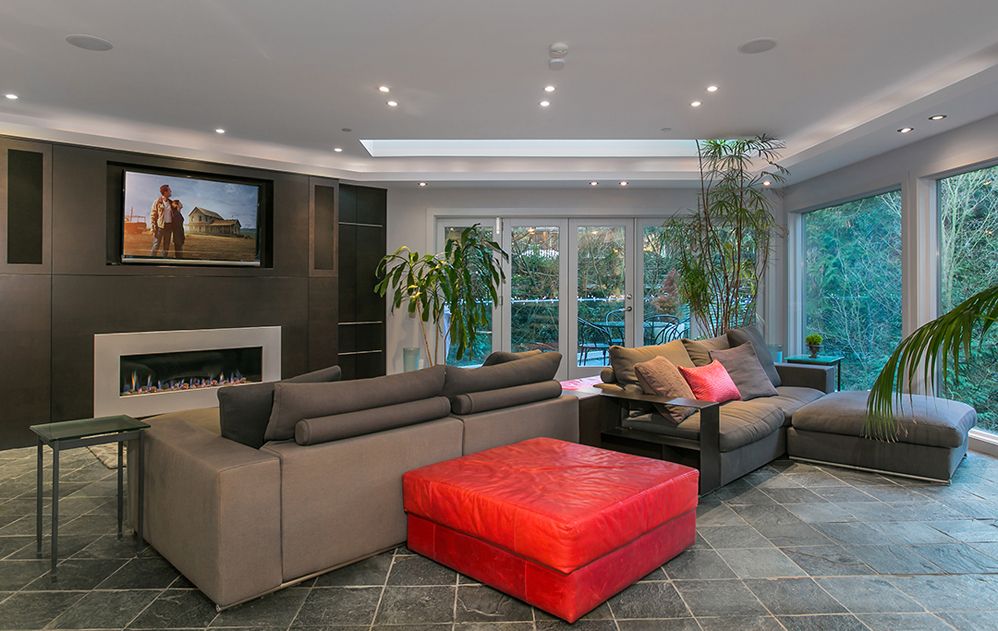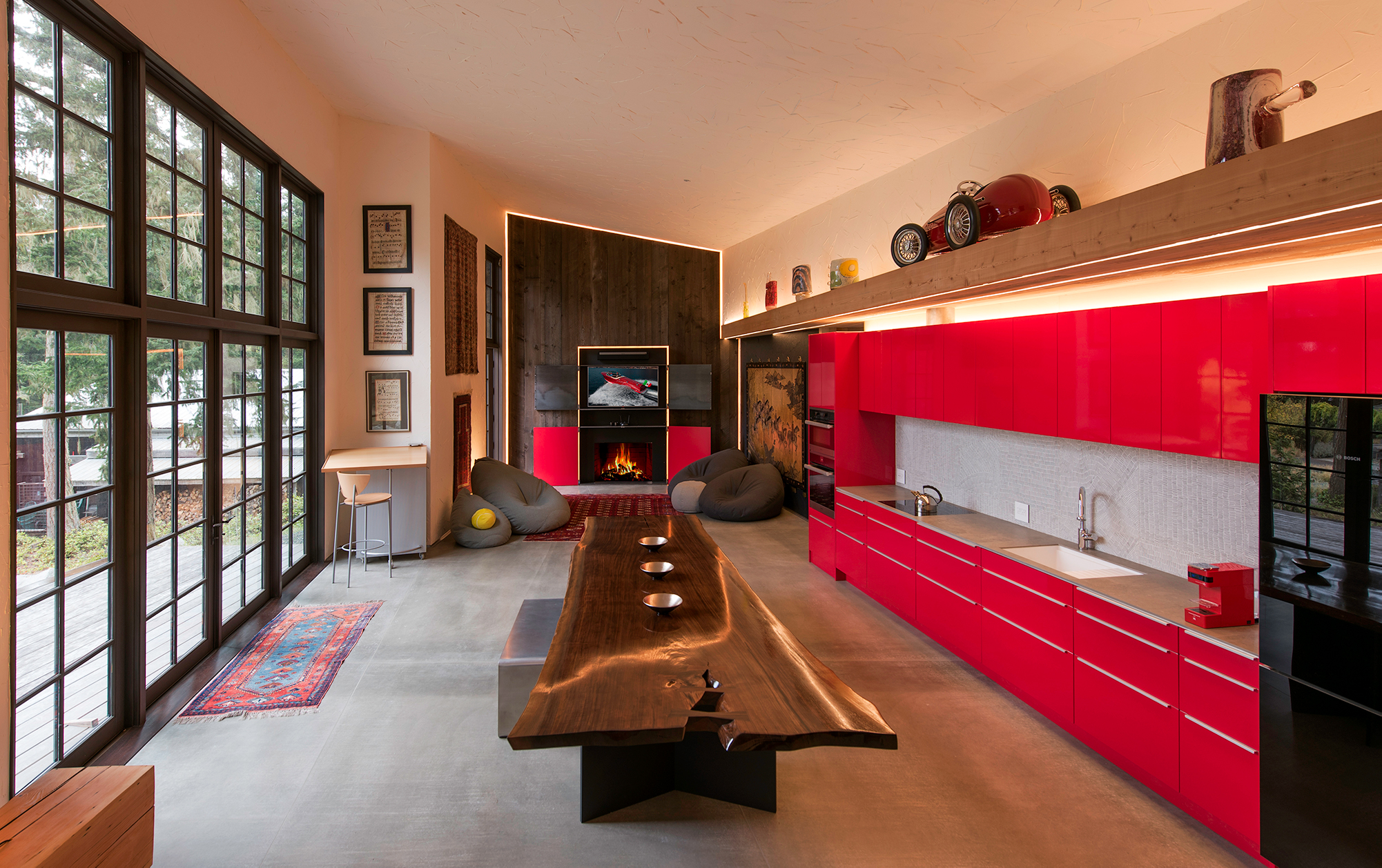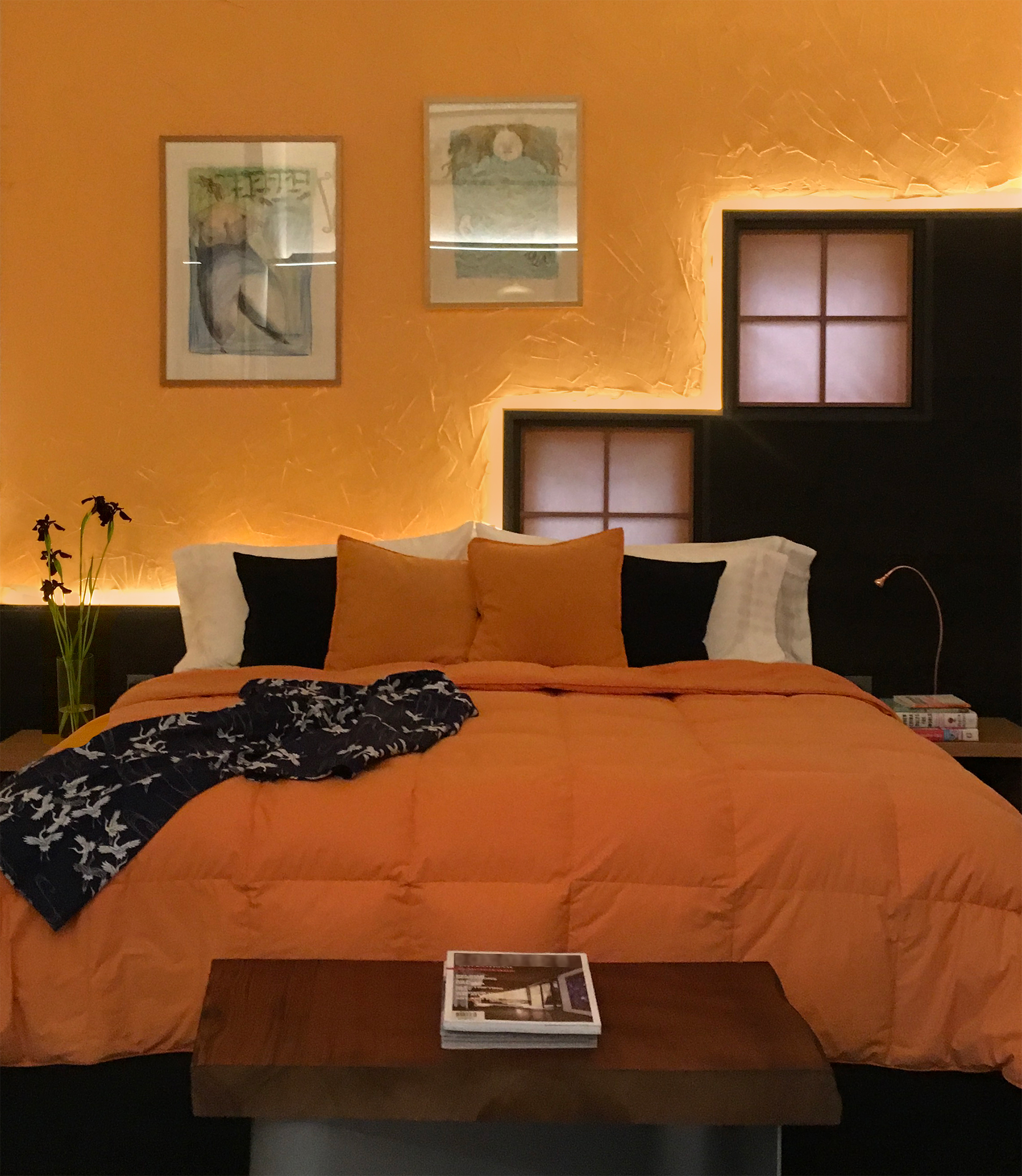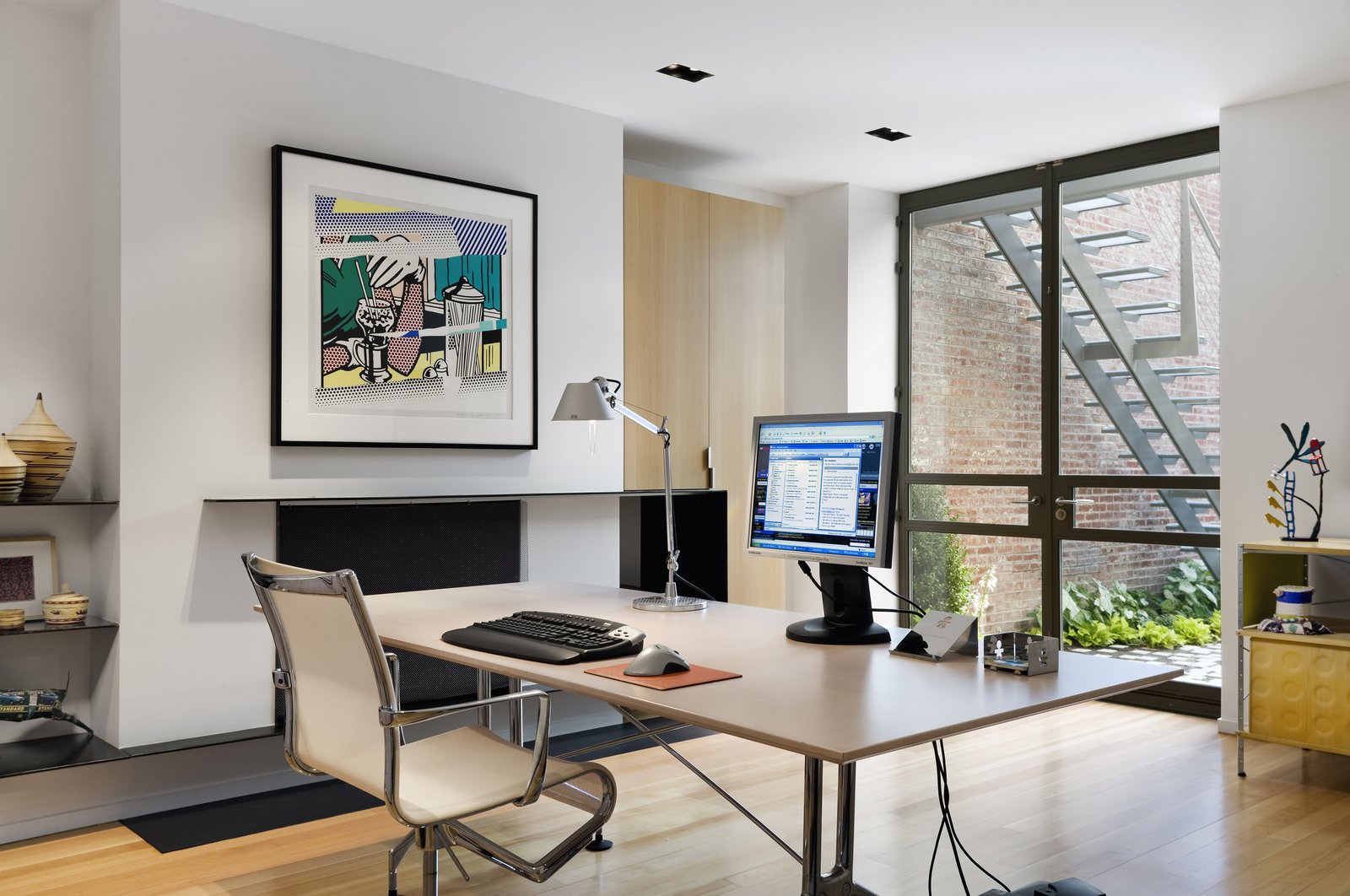
Focus on space, light and the carbon footprint of your interior design project first, and it will be clear and logical what you will need for a healthy lifestyle and sustainable design interior. If you want to delve deeper, then check out the 12 must haves for your sustainably designed home. However, before you get totally submerged in the design process focus on these three things first for your sustainable interior.
SPACE
An interior space of a home should be efficient, flexible and appropriate for the occupants. What does this mean?
Efficient
Efficient means the best use of the space! Have you noticed that houses still have formal dining rooms, when “formal” dining is rare to non-existent for so many of today’s busy families? How often do you see a row of computers on that seldom-used dining table?
As early as the mid-2000s we designed specific family computer spaces (work/play hubs). However this may not always work when one or both of the adults in the family need a dedicated quiet office space to work from home. A home office is no longer an afterthought to be stuck in an out of the way closet but has become an integral part of the interior design of many homes.
Imagine when remote working and online education becomes even more mainstream (and we predict it will; just look at the impact the COVID-19 health issue is driving that!), the work/study hubs may well become the most asked-for feature in new homes!
Observing how interior design evolves to reflect current lifestyles, do you know what a “front parlor” was even fused or? We certainly don’t design them into a floor plan today…in my own home guests head straight for the couch in the kitchen when they arrive, which is fortuitously positioned right adjacent to the built-in espresso machine!

One way we determine the most efficient use of space for an individual, a couple or family, is to walk our clients through a day in their lives, interview each member, and find out what they routinely do in an interior space throughout the day; and that includes weekends, as that might well encompass different activities. You might be surprised by what you find out, but sometimes not as surprised at what your clients find out about themselves!
Flexible
Flexible means that the layout or space can be easily changed or reconfigured as a families dynamics change. The key here is “easily”, so an expensive remodel of the home can be avoided in the future. So when creating the initial floor plan for a client, think about how it might evolve ; for example when the toddlers become teenagers. Or consider what’s required if one or both parents decide to work remotely from home.
Flexible can also mean a variety of uses in any given area. This may influence a furniture plan for our clients when most of their furniture is on wheels and very movable/mobile in their “flex space”!
Check out this quote from a Feb 2020 Forbes article ~ “What Luxury Real Estate Buyers want in their homes”
“With everyone working on laptops and being so mobile, I’ve found that many of my luxury listings must have a space component that is multipurpose and multi-functional. Dining rooms might double as conference rooms; you can have a business meeting in the dining room, then put your laptop away and lunch is served.”

Appropriate
Appropriate for the occupants; we collaborate continuously with our clients, understanding their lifestyles and requirements, to create a home environment that is most appropriate for their lifestyle, and one that (hopefully) brings them continuing enjoyment and healthy lifestyle. Or if appropriate means showing off to friends and posting on Instagram…. then we can design for that too! If you’re lucky, one design works both ways! Real life synchronized with Instagram! Win Win!
LIGHT
Designing interiors with LED (light emitting diode) lighting is absolutely a requirement today for interior designers.
Fortunately the LED products we use in residential design are getting better and better all the time. The stark cold white quality of LED’s (which is a bit depressing to live with), can be avoided or easily compensated for with some fore thought and planning.
Over the last 10 years when designing with LED’s we’ve learned some tips & tricks which help with the “cold” quality of many LED lights in environments where “warmth” is preferred. These include using an amber lighting gel (from theatrical suppliers) to give a warm golden light glow, and/or choosing wall colors to reflect warmth behind and around LEDs. Today with products like Phillips RGB and warm white LED, you can usually achieve a relaxing and pleasant quality of light right out of the box.

Recently I’ve heard from the sustainable interior design community something that I really don’t agree with! And that’s that everything should be white or light neutral colors when using LED lighting and the reason is to not absorb any light. The excuse given is energy efficiency…(admittedly there are some work spaces that might require this), however cold LED lighting with white walls ends up being super depressing, and we’ve had clients in the early days object to LED for this reason. We are not in favor of sacrificing timeless or appropriate design, for the sake of ‘being green’ or energy efficient. We prefer to design for both simultaneously.
In this “Practical Guide to LED Lighting in Residential Applications” there are many helpful hints for understanding the basics, but there is no substitute for trying it out in an actual design project, and knowing how to compensate if the quality of light does not enhance your interior design, or have your clients feeling really good.
In laying out our lighting designs and wiring plans to accommodate LED’s, we very often have to overcome the trades’ status quo attitudes, especially when we propose a “centralized LED driver panel” for LED lights to an electrician who is used to wiring the old/usual way! A centralized driver panel can actually save time and money, and makes LED driver maintenance/replacement much easier, simpler, and cheaper! in the future. If you’re interested please contact me directly to learn more about this.
CARBON FOOTPRINT
Our design clients world-wide are becoming more and more sensitive to reducing their impact on the planet; which in practicality means they want to reduce or eliminate the use of products that contribute to speeding up “global warming”. And that’s all good, for all of us and our future.
So how do we “minimize the carbon footprint” in our interior design? Here are six ways you can get started reducing the “carbon footprint” for your clients:
1 – Use reclaimed and sustainably sourced wood products.
Deforestation is a big contributor to the global carbon footprint. We’ve been “mining the industrial forest” for over 20 years, using reclaimed/previously used wood from industrial buildings of the Pacific Northwest, adding our signature “patina of use” to the majority of our designs. This choice has become much more popular in recent years, and it’s now getting much more difficult to source reclaimed wood from old industrial buildings in our area; however there are still opportunities to be found whenever I go foraging for reclaimed wood for a new design project. Look for houses in your neighborhood or your travels that being deconstructed (‘torn down’ we used to say); look closely at what is being thrown away, as there might be some good old wood headed to the landfill!

2 – Source locally and hand crafted
Whenever possible we source locally, and we have our custom designs crafted by local craftspeople.

3 – Use sustainable materials
Materials and products that meet the sustainable and healthy criteria. Design, function and durability are usually what drive a client’s choice. It’s up to the interior designer to find and specify products and materials that meet the clients wishes, and meet the sustainability criteria. Materials Connexion
4 – Design for longevity
Revisit the SPACE section above and check out our take on “timeless design”.
5 – Design for re-use and minimum waste
When you create a design and detail how your design is constructed, imagine in the future that it might be deconstructed so the components can be used again. This sometimes means screws, not nails. Be careful with that construction adhesive! It’s quick & convenient, and also permanent! It means efficient use of materials, so the pieces make sense for reuse, and also create the minimum waste stream. There’s also using the “left over” materials to create something else in the project.
6 – Focus on Energy Efficient
Check out our recent post 12 must haves for your sustainably designed home.
Wrapping it up
We are fortunate that most of our clients at INCLINEDESIGN come to us because they want cohesive “soup to nuts” sustainable and healthy lifestyle design. Though this is the ideal, it’s often difficult, with limited budgets and the client’s reluctance to deviate from the traditional way of doing things even when they’re starting to focus on sustainable design; so as an interior designer pick a couple of the above to get going, and then expand upon your sustainable design expertise as more of your clients embrace the idea of sustainable. As you expand on your ideas, you’ll be surprised how clients will become more engaged in your projects, feel good about what they are doing for the planet, and enjoy the results of your designs!
and more
If you want to know more about reducing the carbon footprint here’s a lifestyle post from Global Stewards.
After I wrote the above this new post arrived on Dwell, which is very relevant to what I had written: New York Architects on How COVID-19 Is Urging Us to Rethink Home Design

